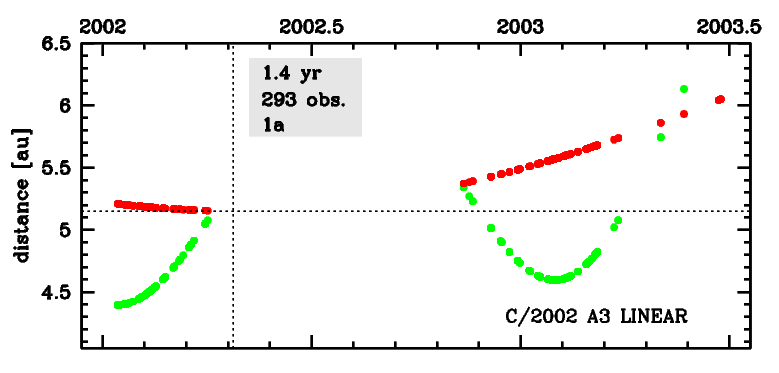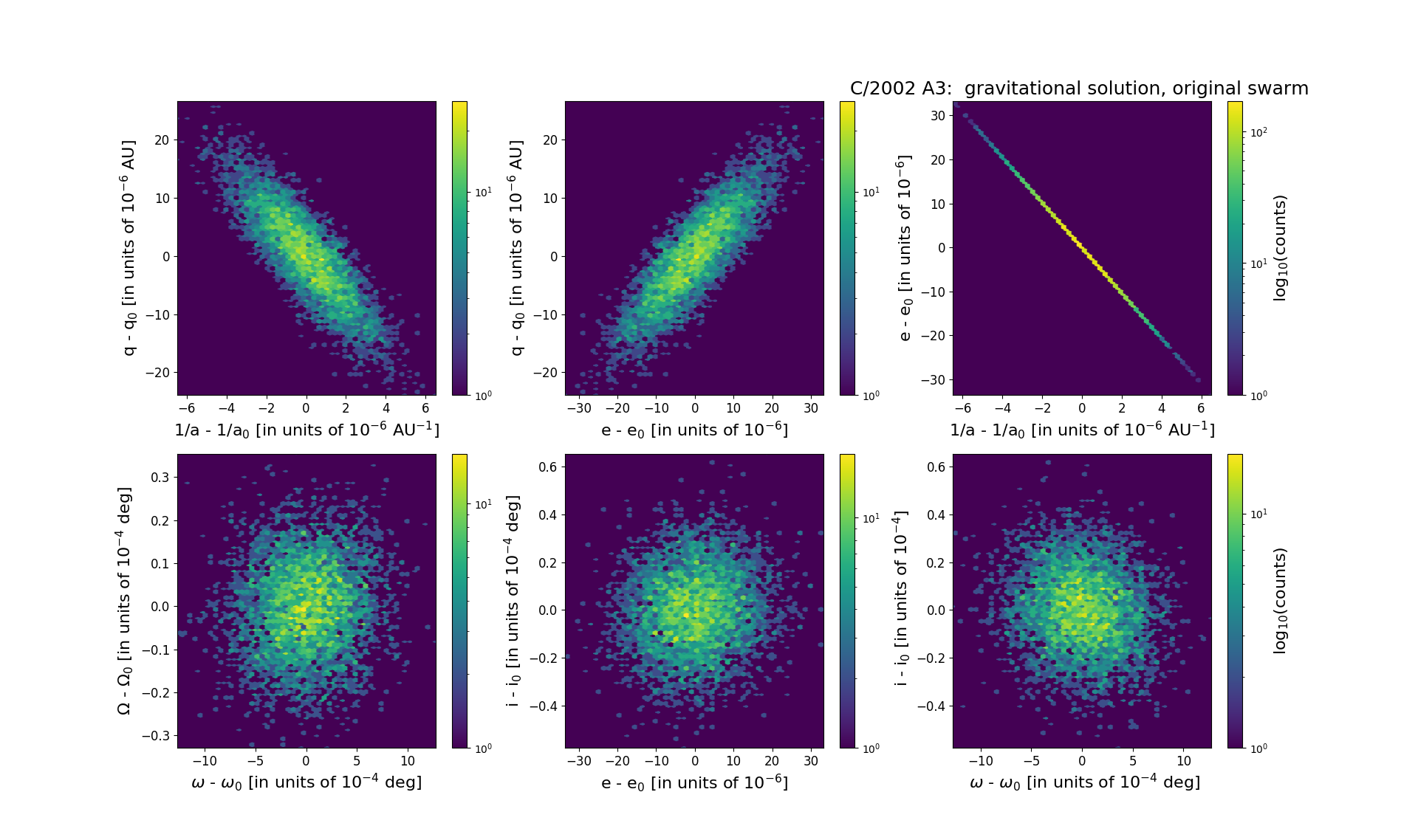C/2002 A3 LINEAR
more info
C/2002 A3 was discovered on 13 January 2002 by the LINEAR as an apparently asteroidal object. Soon, its cometary apperance was reported [IAUC 7799, 2002 January 21].
This comet made its closest approach to the Earth on 12 January 2002 (4.395 au), 3.3 months before perihelion. Around perihelion the comet was not observed for almost 7.5 months (from 2 April to 10 November 2002).
Solution given here is based on data spanning over 1.4 yr in a range of heliocentric distances: 5.21 au – 5.151 au (perihelion) – 6.05 au.
C/2002 A3 had close encounter with Jupiter on 22 January 2003 (0.502 au). Planetary perturbationschanged the orbit of this comet significantly, and this originally Oort spike comet will leave the planetary zone in an orbit with semimajor axis of only about 160 au; thus, its orbital period has been shortened to about 2000 yr.
See also Królikowska 2014 and Wysoczańska et al., 2020.
This comet made its closest approach to the Earth on 12 January 2002 (4.395 au), 3.3 months before perihelion. Around perihelion the comet was not observed for almost 7.5 months (from 2 April to 10 November 2002).
Solution given here is based on data spanning over 1.4 yr in a range of heliocentric distances: 5.21 au – 5.151 au (perihelion) – 6.05 au.
C/2002 A3 had close encounter with Jupiter on 22 January 2003 (0.502 au). Planetary perturbationschanged the orbit of this comet significantly, and this originally Oort spike comet will leave the planetary zone in an orbit with semimajor axis of only about 160 au; thus, its orbital period has been shortened to about 2000 yr.
See also Królikowska 2014 and Wysoczańska et al., 2020.
| solution description | ||
|---|---|---|
| number of observations | 293 | |
| data interval | 2002 01 13 – 2003 06 24 | |
| data type | perihelion within the observation arc (FULL) | |
| data arc selection | entire data set (STD) | |
| range of heliocentric distances | 5.21 au – 5.15 au (perihelion) – 6.05 au | |
| detectability of NG effects in the comet's motion | NG effects not determinable | |
| type of model of motion | GR - gravitational orbit | |
| data weighting | YES | |
| number of residuals | 579 | |
| RMS [arcseconds] | 0.49 | |
| orbit quality class | 1a | |
| orbital elements (barycentric ecliptic J2000) | ||
|---|---|---|
| Epoch | 1696 09 06 | |
| perihelion date | 2002 04 25.19669560 | ± 0.00314686 |
| perihelion distance [au] | 5.14305567 | ± 0.00000753 |
| eccentricity | 0.99989809 | ± 0.00000925 |
| argument of perihelion [°] | 329.552533 | ± 0.000351 |
| ascending node [°] | 136.668877 | ± 0.000010 |
| inclination [°] | 48.065977 | ± 0.000016 |
| reciprocal semi-major axis [10-6 au-1] | 19.82 | ± 1.80 |
| file containing 5001 VCs swarm |
|---|
| 2002a3b5.bmi |

